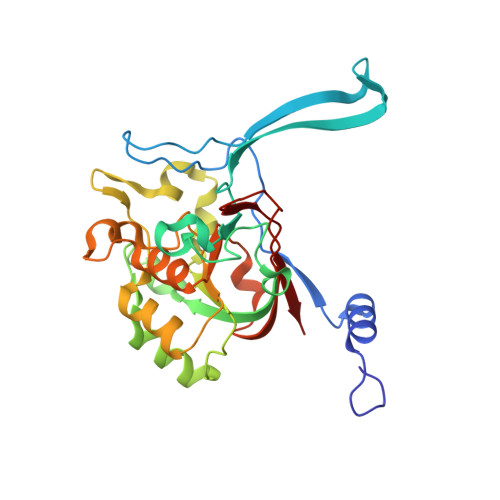A fundamental catalytic difference between zinc and manganese dependent enzymes revealed in a bacterial isatin hydrolase.
Sommer, T., Bjerregaard-Andersen, K., Uribe, L., Etzerodt, M., Diezemann, G., Gauss, J., Cascella, M., Morth, J.P.(2018) Sci Rep 8: 13104-13104
- PubMed: 30166577
- DOI: https://doi.org/10.1038/s41598-018-31259-y
- Primary Citation of Related Structures:
5NMP, 5NNA, 5NNB - PubMed Abstract:
The catalytic mechanism of the cyclic amidohydrolase isatin hydrolase depends on a catalytically active manganese in the substrate-binding pocket. The Mn 2+ ion is bound by a motif also present in other metal dependent hydrolases like the bacterial kynurenine formamidase. The crystal structures of the isatin hydrolases from Labrenzia aggregata and Ralstonia solanacearum combined with activity assays allow for the identification of key determinants specific for the reaction mechanism. Active site residues central to the hydrolytic mechanism include a novel catalytic triad Asp-His-His supported by structural comparison and hybrid quantum mechanics/classical mechanics simulations. A hydrolytic mechanism for a Mn 2+ dependent amidohydrolases that disfavour Zn 2+ as the primary catalytically active site metal proposed here is supported by these likely cases of convergent evolution. The work illustrates a fundamental difference in the substrate-binding mode between Mn 2+ dependent isatin hydrolase like enzymes in comparison with the vast number of Zn 2+ dependent enzymes.
Organizational Affiliation:
Norwegian Center for Molecular Medicine, Nordic EMBL Partnership University of Oslo, Gaustadalléen 21, 0349, Oslo, Norway.
















